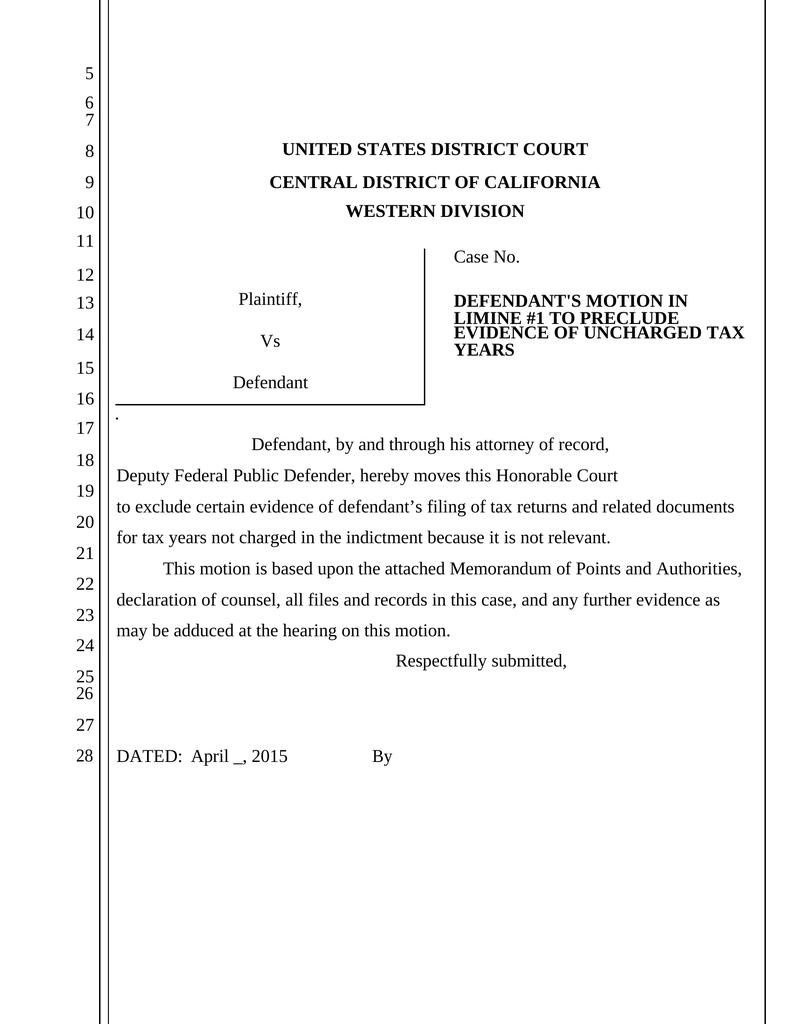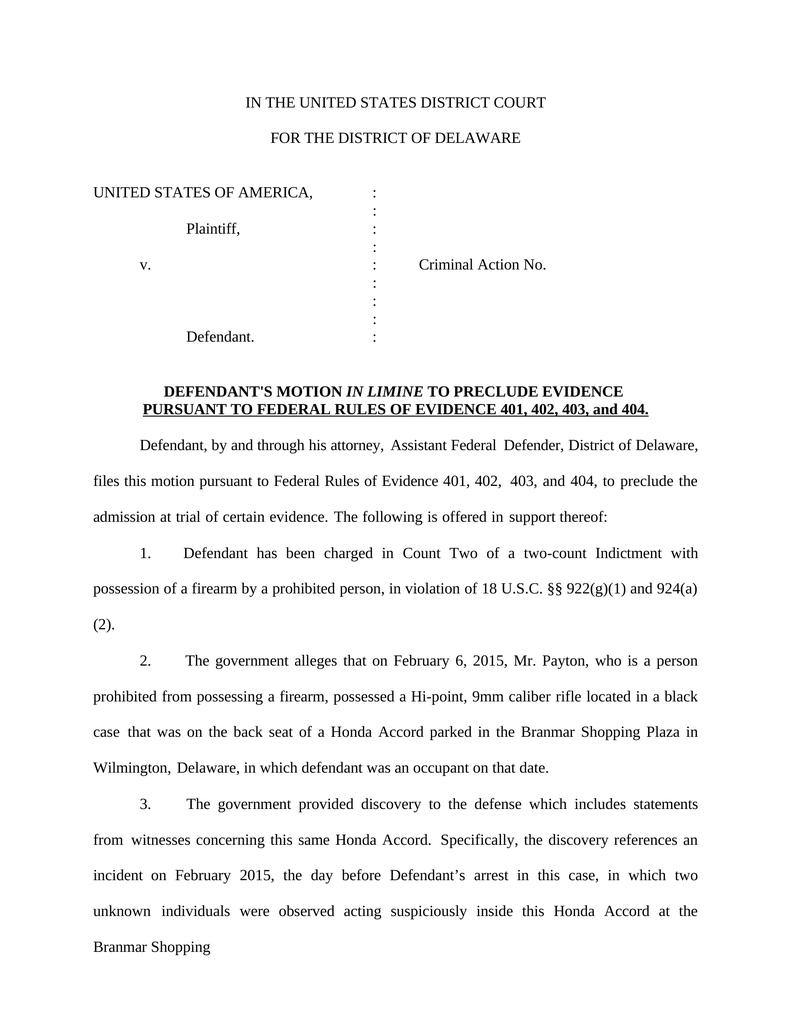

- MOTION IN LIMINE TO EXCLUDE WITNESS TESTIMONY CODE
- MOTION IN LIMINE TO EXCLUDE WITNESS TESTIMONY TRIAL
- MOTION IN LIMINE TO EXCLUDE WITNESS TESTIMONY SERIES
This wording of the plain error principle is from Rule 52(b) of the Federal Rules of Criminal Procedure.
MOTION IN LIMINE TO EXCLUDE WITNESS TESTIMONY SERIES
The judge can foreclose a particular line of testimony and counsel can protect his record without a series of questions before the jury, designed at best to waste time and at worst “to waft into the jury box” the very matter sought to be excluded. 1288, 8 L.Ed.2d 434 (1962), left some doubt whether questions on which an offer is based must first be asked in the presence of the jury. Rule 43(c) of the Federal Rules of Civil Procedure provides: “The court may require the offer to be made out of the hearing of the jury.” In re McConnell, 370 U.S. This subdivision proceeds on the supposition that a ruling which excludes evidence in a jury case is likely to be a pointless procedure if the excluded evidence nevertheless comes to the attention of the jury. Application is made discretionary in view of the practical impossibility of formulating a satisfactory rule in mandatory terms. See 5 Moore's Federal Practice §43.11 (2d ed. It is designed to resolve doubts as to what testimony the witness would have in fact given, and, in nonjury cases, to provide the appellate court with material for a possible final disposition of the case in the event of reversal of a ruling which excluded evidence. The second sentence is in part derived from the final sentence of Rule 43(c).

MOTION IN LIMINE TO EXCLUDE WITNESS TESTIMONY TRIAL
Its purpose is to reproduce for an appellate court, insofar as possible, a true reflection of what occurred in the trial court. The first sentence is the third sentence of Rule 43(c) of the Federal Rules of Civil Procedure virtually verbatim. The status of constitutional error as harmless or not is treated in Chapman v. The rule does not purport to change the law with respect to harmless error.
MOTION IN LIMINE TO EXCLUDE WITNESS TESTIMONY CODE
For similar provisions see Uniform Rules 4 and 5 California Evidence Code §§353 and 354 Kansas Code of Civil Procedure §§60–404 and 60–405. The objection and the offer of proof are the techniques for accomplishing these objectives. Rulings on evidence cannot be assigned as error unless (1) a substantial right is affected, and (2) the nature of the error was called to the attention of the judge, so as to alert him to the proper course of action and enable opposing counsel to take proper corrective measures. Subdivision (a) states the law as generally accepted today. Notes of Advisory Committee on Proposed Rules A court may take notice of a plain error affecting a substantial right, even if the claim of error was not properly preserved. To the extent practicable, the court must conduct a jury trial so that inadmissible evidence is not suggested to the jury by any means. (d) Preventing the Jury from Hearing Inadmissible Evidence. The court may direct that an offer of proof be made in question-and-answer form. The court may make any statement about the character or form of the evidence, the objection made, and the ruling. (c) Court’s Statement About the Ruling Directing an Offer of Proof. Once the court rules definitively on the record - either before or at trial - a party need not renew an objection or offer of proof to preserve a claim of error for appeal. (b) Not Needing to Renew an Objection or Offer of Proof.

(2) if the ruling excludes evidence, a party informs the court of its substance by an offer of proof, unless the substance was apparent from the context. (B) states the specific ground, unless it was apparent from the context or (A) timely objects or moves to strike and (1) if the ruling admits evidence, a party, on the record: A party may claim error in a ruling to admit or exclude evidence only if the error affects a substantial right of the party and:


 0 kommentar(er)
0 kommentar(er)
